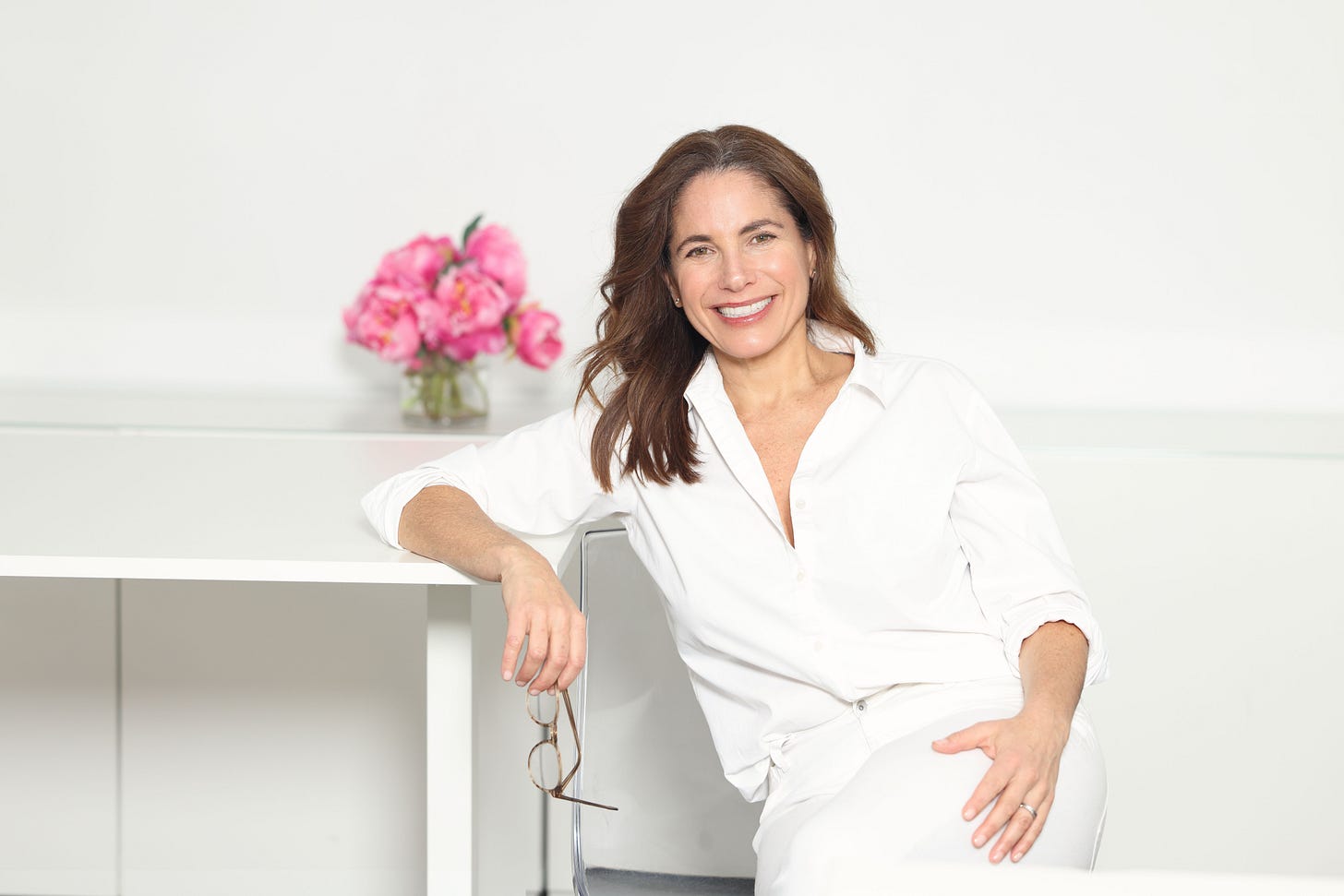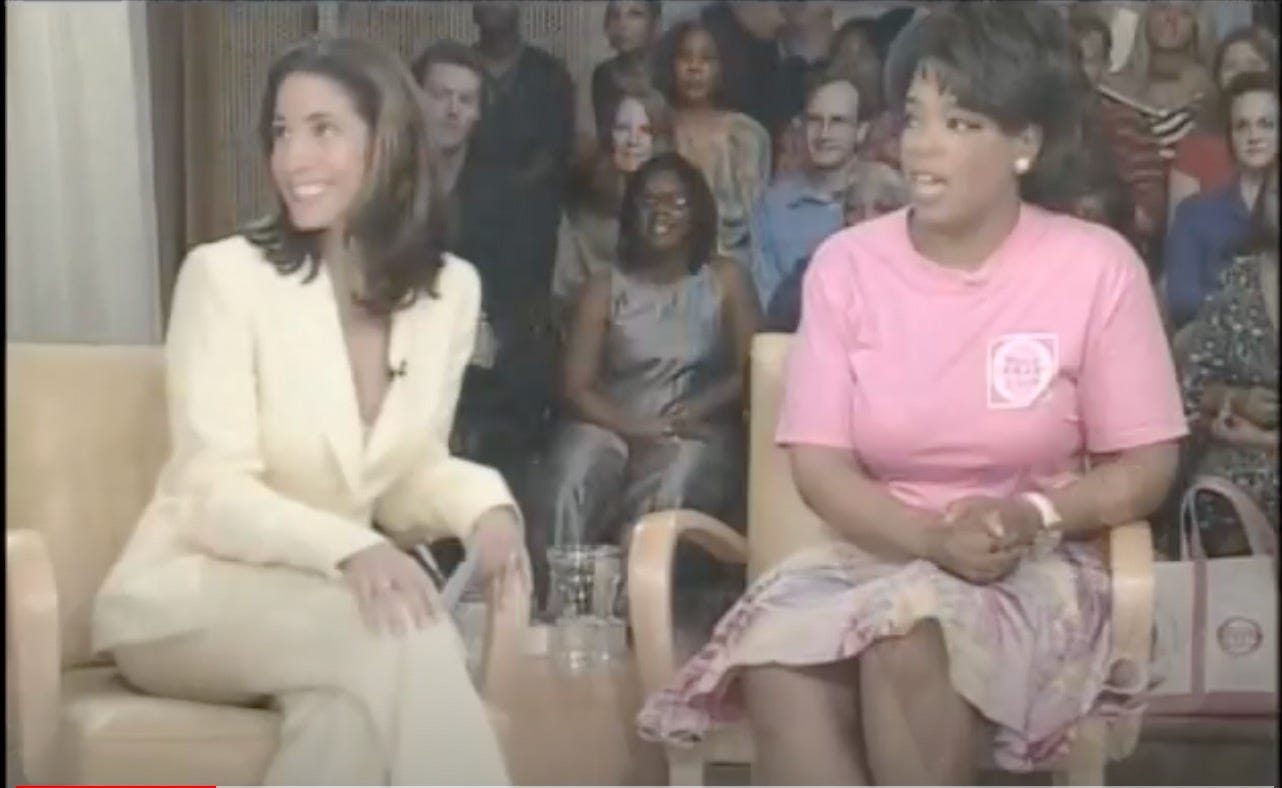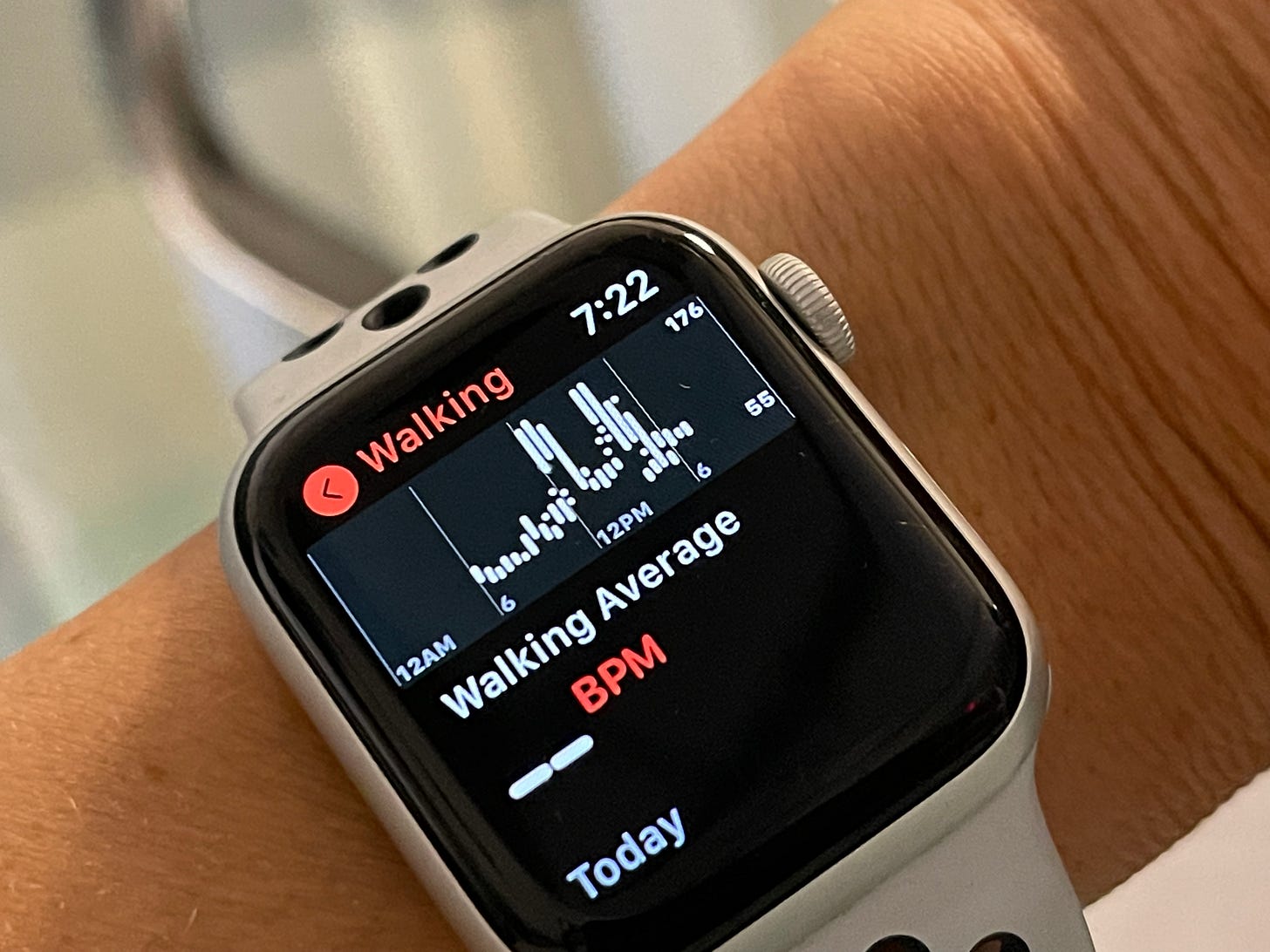From Outerwear to Inner Peace
She spent years, as an editor at Glamour, teaching women how to dress. Then, in middle age, Suze Yalof Schwartz discovered meditation. And it completely changed her life. (And then, eventually, mine.)

Every practitioner of meditation I’ve ever met or read about has a story of transformation. The moment that broke them. The moment they suddenly saw the light. The moment when they realized if they didn’t make some sort of radical change to escape the noise of their buzzing, churning, obnoxiously loud brains in order to fully inhabit the present moment, life’s struggles—instead of providing the rich fertilizer for the end of struggle—would break them.
For Ram Dass, it was meeting a barefoot hippy in Kathmandu. “Don’t think about the past,” the hippy kept telling him, whenever Dass started blabbering. “Just be here now.” (Yes, that is where the phrase originates.) For Ekhart Tolle, it was a bird chirping outside his window during a moment of deep despair. For Thích Nhất Hạnh, it was a school trip with his classmates, where he had a chance encounter with a hermit. For Pema Chodron, it was meeting a monk on a trip to the French Alps in the wake of her second divorce.
For Suze Yalof Schwartz, former Dos and Don’ts Glamour editor and now CEO of Unplug, it was a conversation with her mother-in-law.
Linda Schwartz1—a psychotherapist and the grandmother of Suze’s then three young sons—noticed that her daughter-in-law, who was at the time working as Executive Fashion Editor-at-Large at Glamour, seemed to be suffering from general anxiety after a move out west for her husband’s job. In a nutshell, relocated-to-LA Suze was tired, stretched thin, and stressed out, having to travel often between LA and New York in her frequent role as on-air makeover expert on Good Morning America and The Today Show.
Suze’s main job back then (she was also doing a bunch of spots for Lord & Taylor on Taxi TV) was to find fashion-challenged women out on the street or in the TV studio audience and then to magically transform their outward appearances. Meanwhile, inwardly, she felt like a discombobulated mess. She had no time to herself, growing doubts about where both her life and the magazine industry were heading, and no way to manage her stress or her loud inner monologue and complicated feelings.
“Try meditation,” Linda urged her. The health benefits of mindfulness were, even then, as well documented as the health detriments of stress. It was a no brainer, meditation, and literally at that: emptying the brain of its inner noise lowers stress, aids with sleep, boosts the immune system, staves off chronic illness, and provides both a bedrock of calm and the means with which to re-find it, should we lose it.
So Suze, being Suze, went all out. She booked herself into a four-day Vedic meditation course, followed by a six-week mindfulness course at UCLA, followed by four 21-day challenge sessions with Oprah & Deepak Chopra.
Meditation was a revelation! Life altering, really. But having to learn its tenets back then was too expensive for most, not to mention time consuming and complicated to navigate. How, Suze wondered, could other stressed out people like herself learn to meditate with knowledgeable teachers easily, quickly, and at a fraction of what it had cost her?
“I wanted the Dry Bar of meditation,” she told me. A place you could go, sit for thirty minutes with a teacher trained in guided meditation, and move on with your day, transformed. But back then, such a thing did not exist. (See our interview about her journey, in further detail, below.)
In 2014, Schwartz turned her dream of a drop-in meditation studio into a reality, renting out a raw space near her house and calling it Unplug, which she filled with some of her favorite teachers. The studio, featured in the New York Times a few months after its launch, was an instant success. Turns out? She wasn’t the only one craving the present (un)tense. Busy TV executives sat together on mats with stressed out parents, A-list actors, struggling actors, and a roomful of other inner-peace-seeking humans from every walk of LA life. People who just wanted to quiet the noise in their heads, learn how to regulate their breath, let go of stress, and transform.
I paid a visit to Unplug later that year during a work trip to LA: the first time I’d done any sort of formal meditation whatsoever. Like Suze, I found the act of meditating revelatory and calming, but I didn’t live in LA, and I was too busy solo parenting and working full-time, I told myself, to find a half hour a week, let alone a half hour every day, to focus inward on my breath. Even when copycat meditation studios started sprouting up like mushrooms all over New York.
Then I hit a wall: my own annus horribilis2, 2021, when I realized that, without a daily dose of mindfulness and meditation, without learning how to control my breath and live in the moment, my life would continue to feel like one long, ongoing slog instead of what it feels like today, no matter its setbacks: peaceful, love-filled, joyful, and rich in gratitude. (Even when I went deaf last summer, I was able to breathe through both the loss of my hearing and the $8000 loss of income to the cost of hearing aids and those surprise surgery copays. It’s just my hearing, I told myself. Not my life. I can adapt. Then: It’s just money. I can work harder and make more. Then: I’m grateful I still have my sight.)
What was the event that triggered my own personal transformation? No, not a run-in with a hippy or a chance encounter with a monk or a conversation with a mother-in-law but more of an unusually thick stack of setbacks, one after the other in rapid succession. In other words, each one on its own would have probably been manageable. (I guess?) It was the onslaught that finally kneecapped me.
In 2021, my then partner and I were forced out of our home by a landlord who suddenly wanted to reclaim his apartment. (Yes, this was probably illegal, pre-vaccine, but we didn’t have the energy, funds, or will to fight him.) Then my sexual harasser was pardoned by Trump. Then my relationship combusted into a raging pyre. Two hours after discovering a love letter from my live-in partner of four years to a woman who was not me, I got an email from a lawyer making fallacious claims about my work that would eventually empty my bank account and pummel me into a concessionary pulp3.
An hour after receipt of that email, I was hospitalized with an elevated heart rate of 176 beats per minute that refused to lower, absent a steady stream of Lorazepam mixed with Zofran to stop the lava flow of emesis from the twin shocks. You can actually see the effects on my heart from that one-two punch in a single day on my watch: the love letter discovered at noon, the email from the legal representatives of the business associate received two hours later.
A few weeks after that, I was on a trip with some girlfriends to cry, swim, and heal. As they slept back on land, the stand-up paddle board I’d rented for the afternoon started blowing out to sea. With me on it. And no way to get back.
Keep reading with a 7-day free trial
Subscribe to Ladyparts to keep reading this post and get 7 days of free access to the full post archives.






